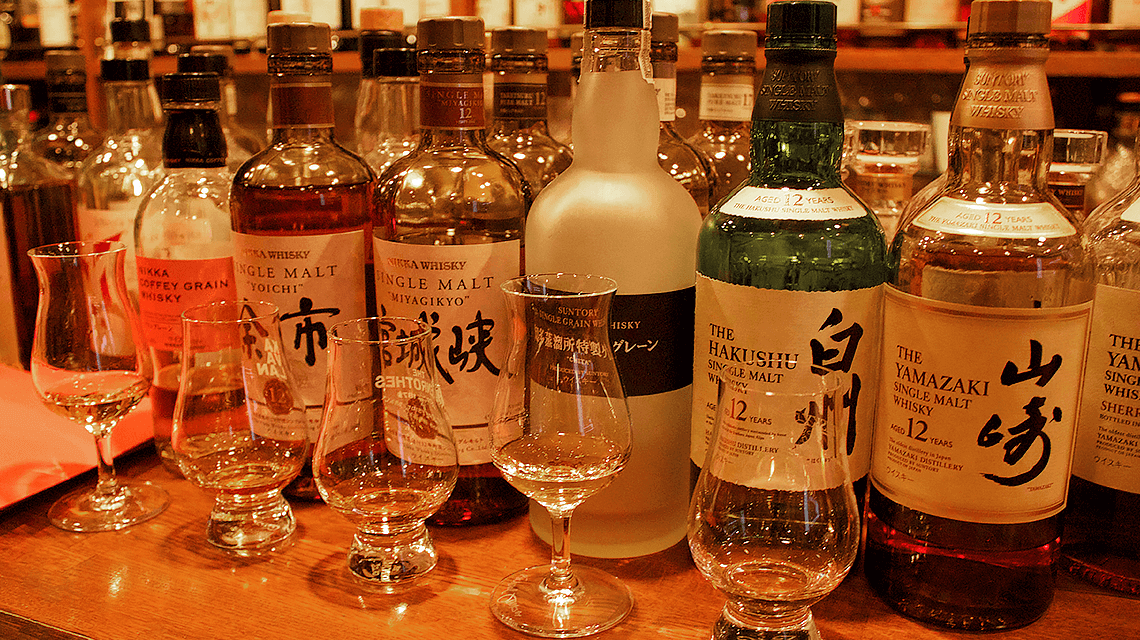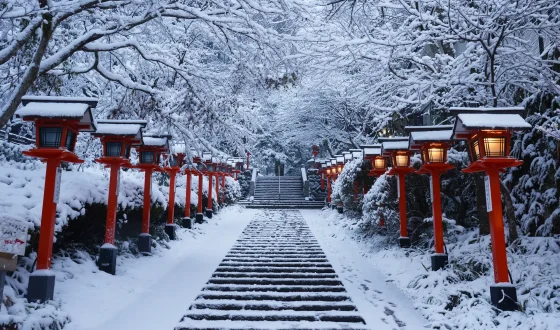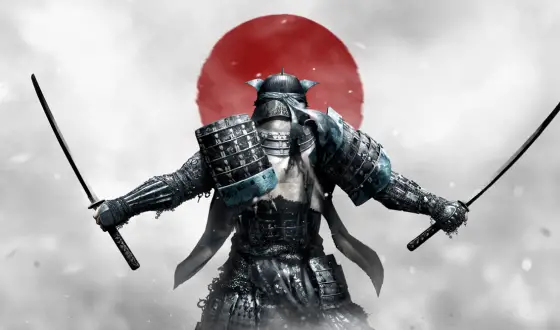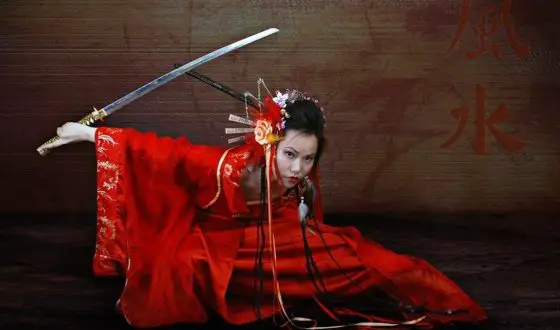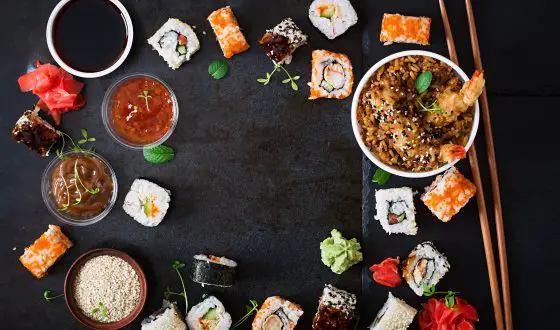How To Drink Japanese Whisky: A Comprehensive Guide
Japanese whisky is an incredibly unique and complex spirit. It has a blend of flavors that no other type of whiskey can match, making it the perfect drink for those looking to explore something new or just seeking a more interesting flavor profile.
Whether you’re new to Japanese whiskey or are already familiar with its subtle complexities, this guide will give you all the information you need to know about how to drink Japanese whisky like a true connoisseur!
From the proper methods for serving and tasting different styles of whisky, right down to selecting complementary snacks that enhance your tasting experience, we have covered it all so you can get the most out of your next whisky experiment. Now, let’s find out how to drink Japanese whisky!
Everything You Need To Know About Japanese Whisky
1. History
Japanese whisky originated in the early 1920s when Masataka Taketsuru, a Japanese national, traveled to Scotland for organic chemistry studies. Instead, he developed an ardor for scotch whisky, which led to the creation of his own product, giving birth to Japanese whisky.
Adhering to the scotch tradition, Japanese whisky is crafted from malted barley and often exhibits a slight peatiness, resulting in a subtle smoky flavor akin to scotch. However, Japanese whiskies are recognized for their fruitiness and smoothness, setting them apart from their Scotch counterparts.
Although the production process of Japanese whisky resembles that of Scotch, Japanese distillers employ unique methods that impart a distinctive taste to their spirits.
2. Taste Profile
Japanese whisky boasts an incredibly diverse range of flavors, making it challenging to provide a single definition for its flavor profile. When compared to American whiskeys such as bourbon and rye, Japanese whisky tends to be drier, smokier, and more peated. It strikes a delightful balance between sweet and dry whiskies, making it perfect for sipping and mixing in cocktails.
The leading flavor notes in many Japanese whiskies are often fruit-based. Citrus, apricot, and peach offer bright and refreshing profiles, while deeper flavors like berries and dried fruit provide a bolder and more complex experience. While some Japanese whiskies incorporate traditional flavors like caramel and vanilla, they also exhibit a unique and boundary-pushing approach. Expect unexpected flavors like kiwi, basil, mint, and green apple.
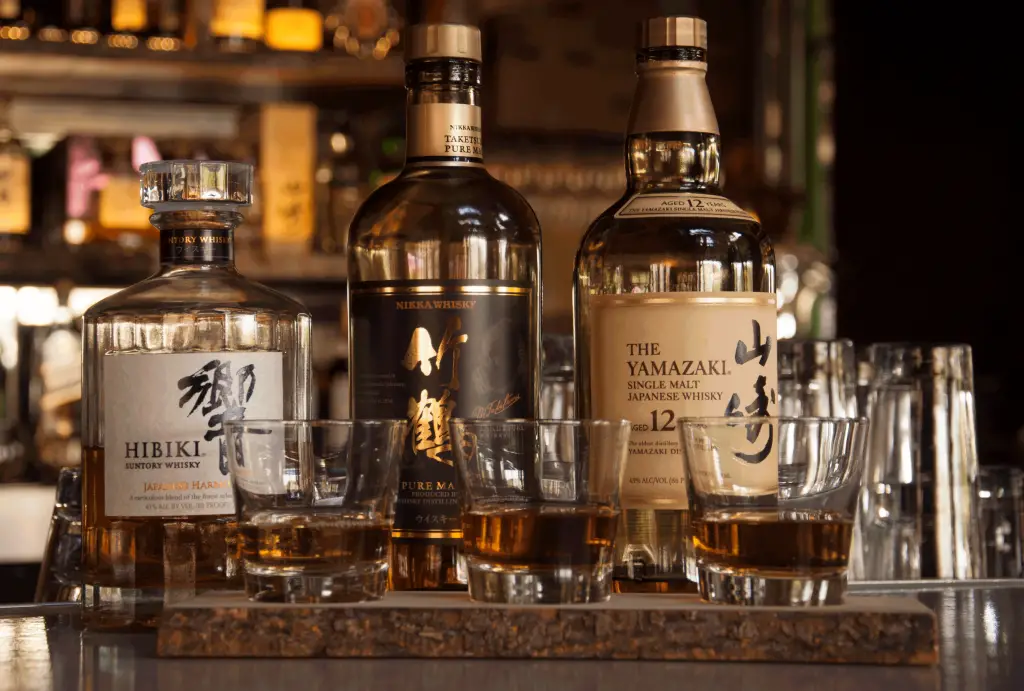
Japanese whisky boasts an incredibly diverse range of flavors, making it challenging to provide a single definition for its flavor profile. (Source: Internet)
3. Types of Japanese Whisky
Japanese whiskies offer a remarkable range of flavor profiles and are produced using diverse methods. Unlike scotch, there isn’t one specific type of Japanese whisky. Each Japanese whisky distillery has its own unique style, crafting a wide array of spirits that cater to various palates.
Typically, Japanese whisky distilleries produce multiple malt variations that can be blended to create different expressions, resulting in whiskies that range from rich, smoky to sweet, creamy.
It is worth noting that Japanese whisky is not limited to a single grain. While malted barley is widely used in Japanese whiskies, some expressions can be made from other grains, such as corn.
There are three popular types of Japanese Whisky:
- Single Malt: Made from 100% malted barley and distilled at a single distillery, it is known for its complexity and refined character.
- Blended: A blend of malt and grain whiskeys from different distilleries, offering a diverse and approachable taste.
- Grain Whiskey: Distilled from grains other than barley, contributing to a lighter and smoother flavor.
How To Drink Japanese Whisky
Drinking Japanese whiskey is an art in itself. Here’s a complete guide on how to drink Japanese whisky to savor its intricate nuances:
1. Choose The Proper Glass
To truly grasp how to drink Japanese whisky and savor its intricate flavor profile, it is essential to choose the right glass to serve it.
Japanese whisky, like other whiskies, is typically served in lowball glasses. The broad base of this glass is perfect for mixing and muddling ingredients, as well as for serving classic cocktails like the old-fashioned over a large ice cube. You should opt for a tulip-shaped glass, like a Glencairn or a Copita glass, to concentrate the aromas and enhance the tasting experience.
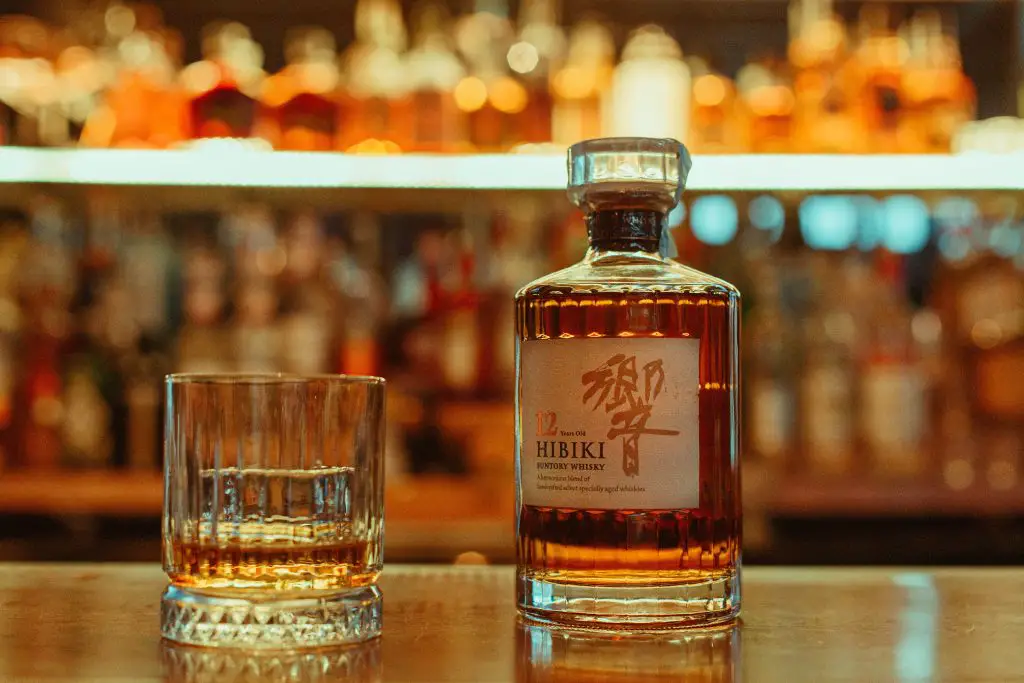
Japanese whisky, like other whiskies, is typically served in lowball glasses. (Source: Internet)
For mixed drinks such as whisky and soda, highball glasses are a perfect choice. It is a higher version of the lowball glass, which provides more space for greater component amounts.
While lowball and highball glasses are commonly used for Japanese whisky cocktails, mixologists also showcase their creativity by serving these drinks in martini glasses or coupe glasses for a touch of elegance.
2. Enjoy It Neat
To fully appreciate the complete flavor profile of any whiskey, it is best enjoyed neat. We highly recommend drinking Japanese whisky neat to truly savor its complexities and nuances. Neat whisky should be served at room temperature in a lowball glass.
3. Enjoy It On The Rocks
Whisky on the rocks is a globally favored choice. However, it’s important to note that the use of ice can dilute the whisky as you consume it, which may or may not be preferred depending on personal taste. Alternatively, for a smoother yet full flavor experience, chilling both the glass and the whisky beforehand is recommended.
Regarding Japanese whisky, some individuals find its taste too robust to drink neat, while others advise against diluting its flavor with ice. Ultimately, the decision of whether to enjoy Japanese whisky on the rocks or neat is a matter of personal preference. To determine what suits you best, it is suggested that you try both methods.

Whisky on the rocks is a globally favored choice. (Source: Internet)
4. Highball Is Also A Good Option
The highball, a popular way to enjoy Japanese whisky, offers a refreshing and light drink that is often associated with social gatherings in Japan. It combines whisky, soda, and ice, creating a delightful beverage that is easy to drink. The highball’s lower-alcohol content makes it suitable for casual settings, as its flavor is not as intense as other drinks.
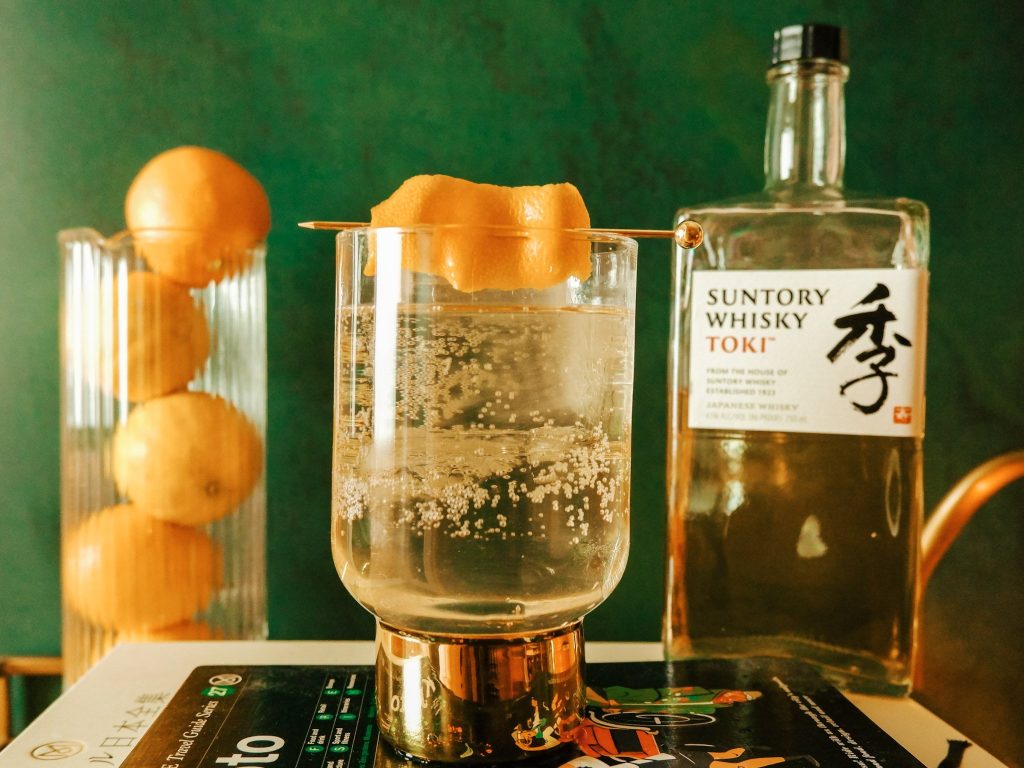
Highball Is Also A Good Option (Source: Internet)
5. Pairing Japanese Whisky With The Right Dishes
Japanese whisky is a superb accompaniment for Japanese cuisine like sashimi, sushi, and ramen. Additionally, it also goes well with a wide range of foods, such as grilled meat, steak, seafood, and chocolate. When selecting food pairings with your Japanese whisky, it’s essential to consider the taste profiles of both. For heartier dishes like stew or steak, a smokier whisky is a great match, while lighter and sweeter whiskies complement seafood dishes splendidly.
How To Drink Japanese Whisky: Principles To Remember
- Appreciate Craftsmanship: Japanese whisky is a result of meticulous craftsmanship. Approach it with an appreciation for the dedication and artistry that go into its production.
- Sip It Slowly: To truly enjoy the nuanced flavors and enchanting aromas of Japanese whisky, it is best savored in small sips. Immerse yourself in the experience, allowing each sip to unfold its complexities.
- Consider Adding Water: A few drops of water can open up the flavors and aromas of Japanese whisky. Experiment with dilution to find your preferred balance.

A few drops of water can open up the flavors and aromas of Japanese whisky. (Source: Internet)
- Mind the Temperature: Although some people prefer whiskey at room temperature, don’t hesitate to lightly chill it or use a large ice cube if it enhances your tasting experience.
- Japanese Whisky Will Change Over Time: Japanese whisky producers meticulously analyze the fermentation, distillation, and maturation processes to continuously enhance their whisky-making. Whether it’s improving efficiencies or refining flavors at any stage of the value chain, Japanese whisky makers always strive to adapt and elevate their craft.
The Best Japanese Whisky Brands
While the best Japanese whiskey brands can be a matter of personal preference, several distilleries in Japan have gained international recognition for their exceptional whiskey offerings. Here are some of the top Japanese whisky brands known for producing high-quality whisky:
Suntory Whisky is a name synonymous with Japanese whiskey excellence. Established by Shinjiro Torii in 1923, it is one of the oldest and most respected whiskey producers in Japan.
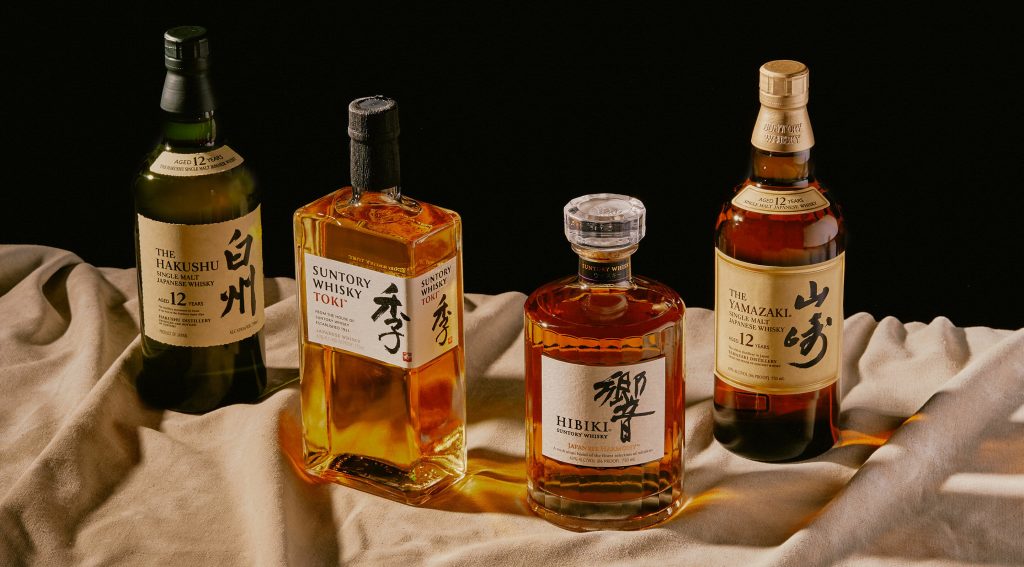
Suntory Whisky (Source: Internet)
Suntory Whisky offers a diverse and extensive portfolio of whiskeys, showcasing the brand’s commitment to quality and innovation. Some of its notable expressions include:
- Yamazaki Single Malt: Yamazaki’s single malts are celebrated for their complexity and balance, often featuring fruity, floral, and subtle smoky notes.
- Hibiki Harmony: Hibiki is Suntory’s renowned blended whiskey brand, known for its harmonious and elegant profile, making it a favorite among whiskey enthusiasts.
- Hakushu Single Malt: Hakushu’s single malts are characterized by their refreshing and herbaceous qualities, with hints of green apple and peppermint.
Mars Whisky, also known as Shinshu Mars Whisky, is a prominent name in the world of Japanese whiskey. Situated in the picturesque Japanese Alps at the Shinshu Mars Distillery, this brand has gained recognition for its commitment to producing distinctive and high-quality whiskey.
Mars Whisky offers a diverse portfolio of single malts and blends, each showcasing the brand’s dedication to craftsmanship and innovation. Some of their popular expressions include Mars Komagatake, Mars Iwai, and Mars Tsunuki.
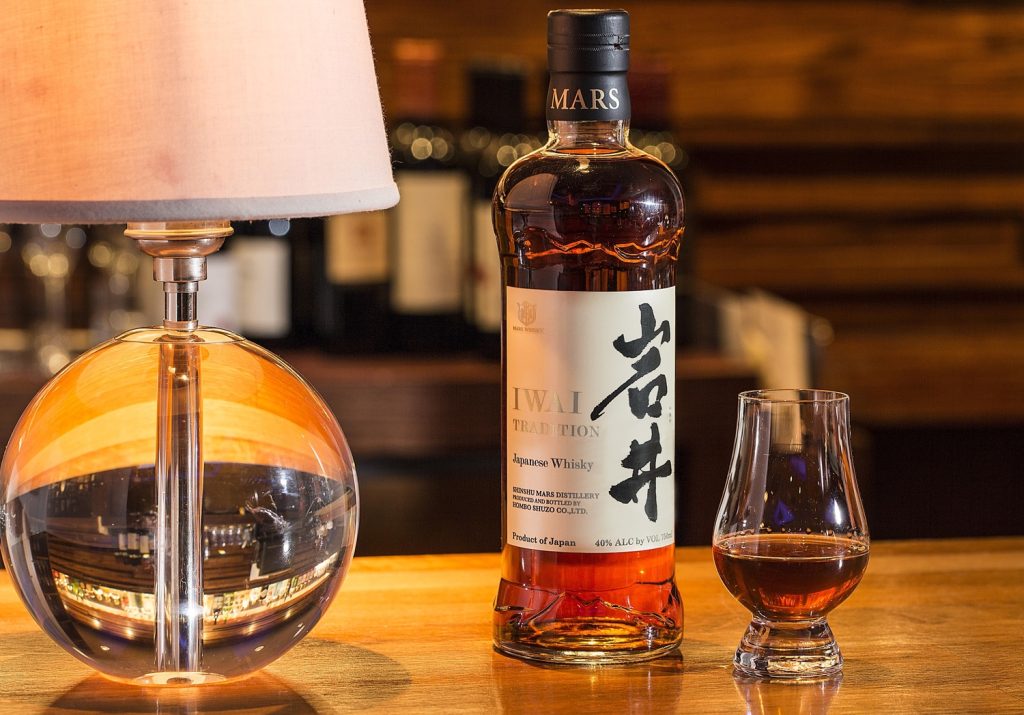
Mars Whisky (Source: Internet)
Nikka Whisky stands as one of the most esteemed and renowned Japanese whiskey producers, known for its unwavering commitment to traditional craftsmanship and the creation of exceptional, one-of-a-kind spirits. Founded by Masataka Taketsuru, a connoisseur trained in Scotland who brought back his profound knowledge and passion for whiskey to Japan, Nikka has played a pivotal role in shaping the Japanese whiskey industry.

Nikka Whisky (Source: Internet)
Nikka whiskies are exquisite blends of Japanese whisky, characterized by a delightful combination of sweetness and robustness in flavor. Notably, Nikka Coffey Grain, their signature grain whisky, is primarily made from corn, imparting a flavor reminiscent of fine bourbon.
Chichibu Whisky, a relatively new player in the world of Japanese whisky. Established in 2008, the Chichibu Distillery has quickly gained recognition for its innovative approach and quality offerings.
Chichibu’s location plays a significant role in its whiskey’s character. The town of Chichibu experiences significant temperature variations throughout the year, with hot summers and cold winters. This climate accelerates the aging process and imparts distinct flavors to the whiskey.
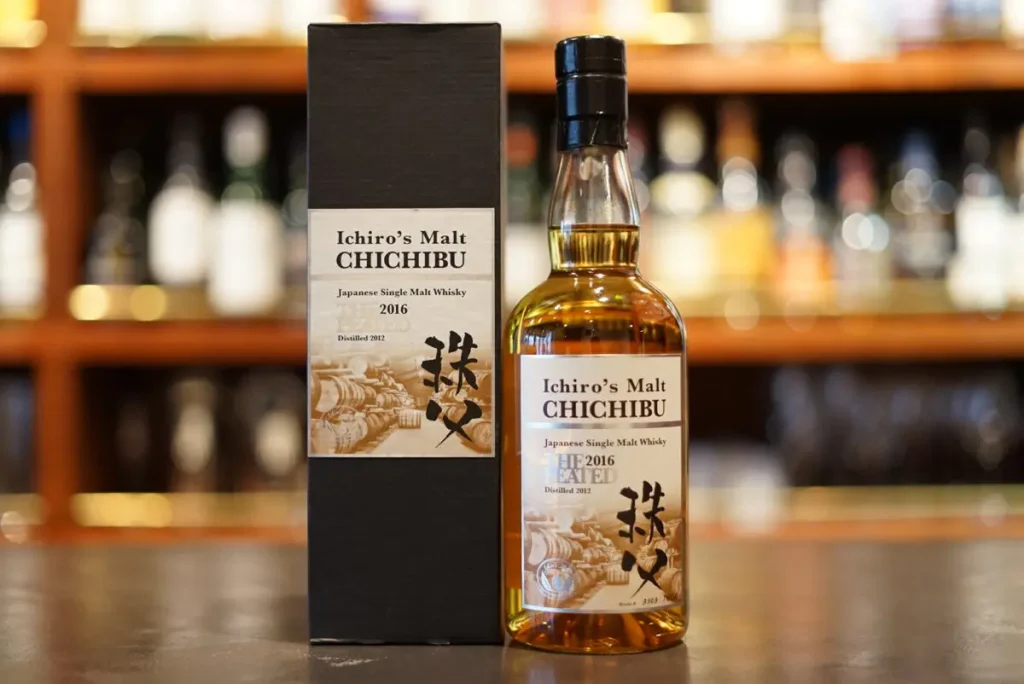
Chichibu Whisky (Source: Internet)
You can also like:
- What To Serve With Sushi: The Delectable Side Dish Ideas
- How Long Does Sake Last?
- Best Bars in Tokyo: Must-Try Places in Tokyo
What Food Pairs Well With Japanese Whisky?
Japanese whisky is versatile for meal pairings since it has a variety of taste characteristics. Here are some food pairings that work well with Japanese whisky:
Sushi and Sashimi: Light and delicate Japanese whiskies pair beautifully with the fresh and subtle flavors of sushi and sashimi. The clean, crisp notes of the whisky complement the seafood’s nuances.
Grilled Yakitori: The smokiness of grilled yakitori skewers, whether chicken, beef, or vegetables, can be enhanced by the peaty or smoky notes in some Japanese whiskies.
Camembert cheese: Camembert, a luscious and velvety cheese delicacy, is a delightful companion to Japanese whisky. While the idea of pairing Japanese whisky with cheese might not immediately come to mind, the gentle texture, earthy nuances, and subtle saltiness of Camembert beautifully harmonize with the whisky’s flavor.
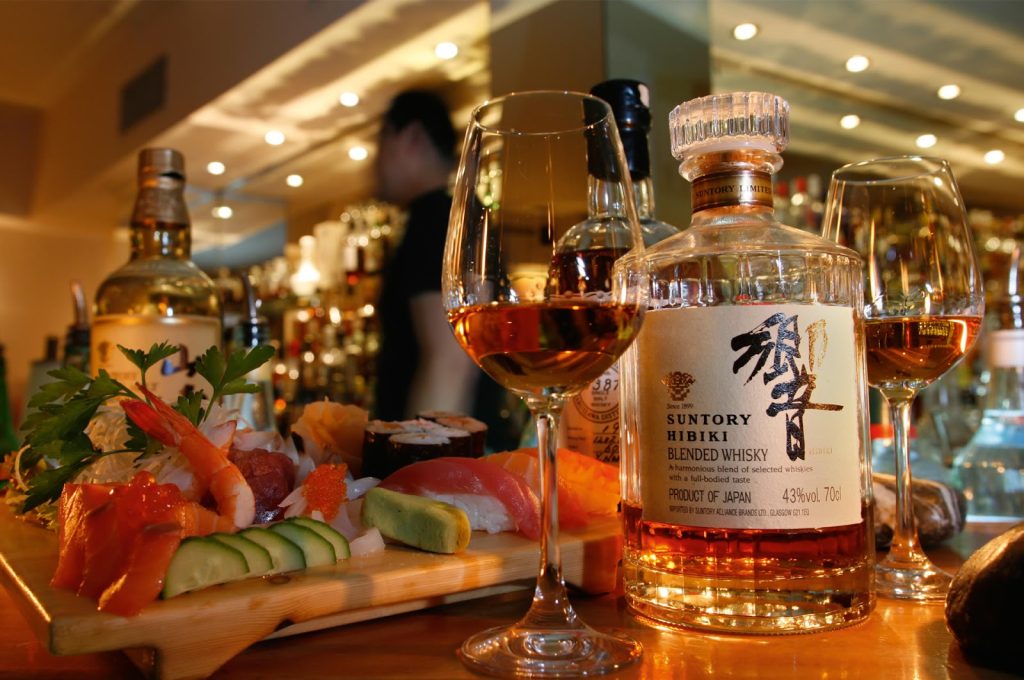
Japanese whisky is versatile for meal pairings since it has a variety of taste characteristics. (Source: Internet)
Tempura: Crispy tempura, with its light and airy texture, contrasts nicely with the complexity of Japanese whisky. The whisky’s sweetness and spice can balance the richness of the tempura.
Japanese Curry: The mild spice and rich flavors of Japanese curry are a great match for a whisky with a bit of heat or a bold, spicy character.
Sukiyaki or Shabu-Shabu: These Japanese hot pot dishes with thinly sliced meat, vegetables, and dipping sauces pair well with Japanese whisky’s versatility. You can adjust the whisky choice based on the richness of the broth and ingredients.
Dark Chocolate or Matcha Desserts: For dessert, consider pairing Japanese whisky with dark chocolate or matcha-flavored sweets. The whisky’s sweetness can complement the bitterness of the chocolate or the earthy notes of matcha.
Noodles: Ramen or udon dishes with flavorful broths can be complemented by the warm and soothing flavors of Japanese whisky.
Smoked Salmon: The smoky notes in some Japanese whiskies can harmonize with the smokiness of salmon, making it a great match for appetizers or canapés.
FAQs
1. Can you drink Japanese whisky straight?
The answer is Yes. We advise tasting your Japanese whiskey neat at least once so you may discover all of its subtleties and nuances. In a lowball glass, neat whiskey should be consumed at room temperature.
2. Do you add water to Japanese whisky?
Many whiskey experts advise adding a little water to whisky to bring out its distinct tastes and aromas. Adding a few drops of water will make your Japanese whiskey easier to drink.
3. How is Japanese whiskey different from Scottish whiskey?
Because Japanese whiskey won’t need to age for as long as Scotch does, it often has a greater ABV than whiskies made in Scotland. As a result of aging far quicker than Scotch, Japanese whiskey frequently has a richer taste than Scottish whiskey.
4. Is Japanese whiskey good?
Opinions may vary, but Japanese whisky has evolved into a flourishing category, characterized by its distinct flavors, rich history, and the meticulous craftsmanship of its distillers. As the fascination with Japanese whisky continues to surge, so do the prices, reflecting its increasing popularity.
5. Why is Japanese whisky so light?
Because of the blending process, Japanese whiskies tend to be lighter and more aromatic compared to Scotch whisky. The choice of cask for maturation and the use of additives also heavily influence their flavor. Notably, the Japanese are renowned for their skillful incorporation of fruit and other essences, such as cherry blossoms.
6. Should Japanese whisky be refrigerated?
With our thorough research on how to drink Japanese whisky, Japanese whisky should generally not be refrigerated. Whisky is a spirit with a relatively high alcohol content, typically around 40% ABV (alcohol by volume). Refrigerating it can have some unintended consequences. However, there are a few exceptions and situations where refrigeration might be considered. If you’re using Japanese whisky in cocktails that call for ice, it’s perfectly acceptable to chill the whisky temporarily. Try not to keep it in the refrigerator for extended periods.
Conclusion
The world of Japanese whisky is vast and complex, but with our guides on how to drink Japanese whisky, you’ll be able to confidently select and enjoy this exquisite spirit properly. To sum up, Japanese whisky should not be ignored. It can provide a unique and wonderful experience for whisky connoisseurs and novice drinkers alike. Take the time to read this guide carefully, and enjoy Japanese whisky with family or friends. Don’t hesitate any longer; share a good drink with your loved ones!

